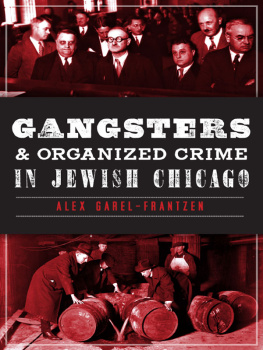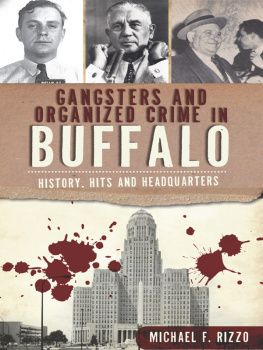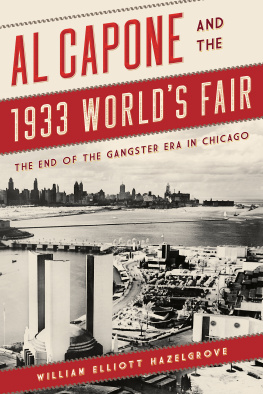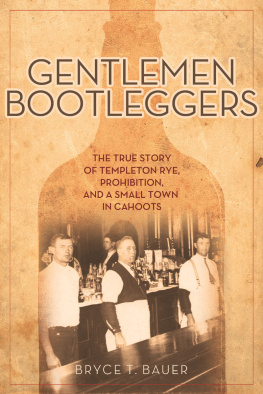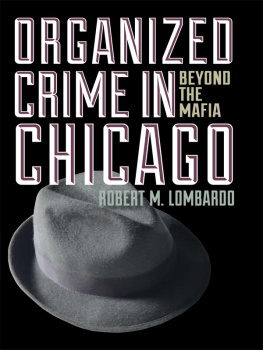Thanks go to the Herscher Area Historical Society and Museum; Mary Michals of the Abraham Lincoln Presidential Library in Springfield; Betty Schatz and the Kankakee Public Library; the staff of the Kankakee Community College Library; Jeff Ruetsche of Arcadia Publishing; William Furry, executive director of the Illinois State Historical Society; Nancy Fike and the McHenry County Historical Society and Museum; the Dwight Museum; the Kankakee County Museum in Governor Small Memorial Park; and to Nancy (Sawyer) Wagner, Mary Haviland, and Paul Roeder. Thanks also goes to Bill Schaub and Jeff Thompson, managers of the Walgreens stores in Kankakee; Jack and Paula Goodwin of Paperback Reader in Kankakee; the Villages of Campus and Herscher; Campus State Bank; and State Bank of Herscher for their continued support of local history. Thanks to top journalists Rich Miller, Tom Roeser, Chuck Goudie, Steve Sanders, Eric Zorn, Bernie Schoenburg, and others for their reviews and encouragement. Research came from books listed in the bibliography on page 127 and from the microfilm and online files of the Chicago Tribune , Kankakee Daily Republican , Kankakee Daily News , Time magazine, and other sources.
The Kankakee County Museum and the Kankakee County Historical Society, other than providing research materials upon request, has not in any other manner participated in the preparation of this publication. It has not been consulted, nor had any part in formulating any interpretations or scholarly arguments that the author has felt justified in forming from any research materials acquired from the artifact, archival, and photographic collections of the Kankakee County Museum.
INTRODUCTION
One might think this book is the story of bootleggers and gangsters in Chicago during the 1920s; it is not. It is the story of the crooked politicians who enabled and aided the bootleggers and the gangstersallowing small-time gangs to grow into big-time organized crime.
Al Capone became the biggest of all Chicago gangsters. But would Capone have grown as big without Mayor William Hale Thompson, Gov. Len Small, and thousands of other politicians and political workers from city hall to the state house who were anxious to take the mobsters money? Chicago police chief Charles Fitzmorris estimated that 65 percent of Chicagos police were on gang payrolls in the 1920s, not just protecting bootleggers, but pushing the stuff. It also was estimated that the Capone organization took in $100 million a year at its peak in the late 1920s, and $30 million of that went to police, politicians, and anyone else who needed their palms greased. Without the help of crooked politicians and police, Capone might have been just another gang boss, like Bugs Moran, Dean OBanion, Spike ODonnell, or Roger Touhy. Without these politicians and police, organized crime might never have become so organized.
There are many famous quotes regarding Illinois politics. Political boss Fred Lundin said it best and most accurately in the 1920s, To hell with the public and our campaign promises, were at the feedbox now! Chicago alderman Paddy Bauler famously said in the early 1900s, Chicago aint ready for reform. One hundred years later, it seems it still isnt.
This book is about crime and politics in the 1920s and takes a special look at the four major political powers of the era: Chicago mayor William Hale Big Bill Thompson, Gov. Len Small, and bosses William Lorimer and Fred Lundin. The following pages give the background of organized crime not just in the hideouts of the hoodlums, but also in the offices of the elected representatives in city hall and in the capitol, from Chicago to Springfield, in between and beyond.
J. P. Alleys cartoon in the Memphis Commercial Appeal , nearly one hundred years ago, is just as timely today as it was thenno matter what party is doing the singing. (JR.)
One
ORGANIZED CRIME ORGANIZES
GAMBLING AND GIRLS
While it was Prohibition in the 1920s that really allowed small-time gangs to become major crime families, gangs in Chicago already were very well organized and professional before that era. Criminals started organizing almost from the time Chicago was founded. Gambling and prostitution flourished from the start, and they were the first industries to rebuild after the great fire of 1871. Michael McDonald became the king of the gambling rackets in the 1880s, and the Levee District in the First Ward became a cesspool of prostitution, gambling, and other vices by the 1890s. Mont Tennes followed McDonald as the head of the gambling rackets, while Big Jim Colosimo took organized crime to a higher level.
Chicagos First Ward aldermen Bathhouse John Coughlin and Hinky Dink Kenna solidified the partnership between crime bosses and politicians in the 1890s. Their criminal-political machine was based on graft and protection money from the saloons, brothels, and gambling halls of the Levee. To hold onto their power, Kenna introduced chain voting, where premarked ballots were taken to polls by election workers who continued until enough ballots were cast to make their candidate a winner.
Coughlin and Kenna were succeeded by a long list of Mob-connected politicians, continuing to the present era. A recent graduate was First Ward alderman Fred Roti. His father, Bruno the Bomber Roti, worked for Al Capone. The FBI called Fred Roti a made member of the Mob who ran the rackets, bribed judges, and eventually went to prison. Roti died in 1999 and is buried in Mount Carmel Cemetery, not far from Al Capones grave.
Bathhouse John (above, left) and Hinky Dink Kenna (above, right) helped Big Jim Colosimo get his start. Colosimo owned a famous nightclub where celebrities, politicians, and others from Chicagos elite gathered. Colosimo and his wife, Victoria (whom he dumped for showgirl Dana Wynter, at left), also owned as many as 200 brothels, many of them in the Levee District. He collected from the brothels to pay off the politicians and police. Colosimos pimps and prostitutes worked the polls on election days. The brutal Colosimo also practiced white slavery, luring innocent women into forced prostitution. (All KCC.)


